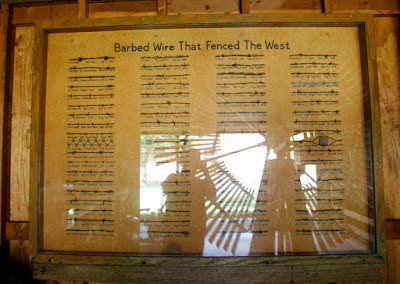 |
| Fences on Oklahoma panhandle region |
Don't Fence Me In
Writer(s): Cole Porter
Copyright: WB Music Corp
Oh, give me land, lots of land under starry skies above
Don't fence me in
Let me ride through the wide open country that I love
Don't fence me in
Let me be by myself in the evenin' breeze
And listen to the murmur of cottonwood trees
Send me off forever but I ask you please
Don't fence me in
Just turn me loose, let me straddle my old saddle
underneath the western skies
On my cayuse, let me wander over yonder
Till I see the mountains rise
I want to ride to the ridge where the west commences
And gaze at the moon till I lose my senses
And I can't look at hobbles and i can't stand fences
Don't fence me in
Oh, give me land, lots of land under starry skies
Don't fence me in
Let me ride through the wide country that I love
Don't fence me in
Just turn me loose, let me straddle my old saddle
underneath the western skies
On my cayuse, let me wander over yonder
Till I see the mountains rise
I want to ride to the ridge where the West commences
And gaze at the moon till I lose my senses
And I can't look at hobbles and I can't stand fences
Don't fence me in, no
Pop. oh don't you fence me in
***
 |
Rabbit-proof, Emu fence, Dingo fence...more fences in Australia
*** |
The Fence Cutting Wars occurred near end of the 19th century in the American Old West, and were a series of disputes between farmers and cattlemen with large land holdings. As newcomers came to the American West to farm, established cattlemen began to fence off their large tracts of land with barbed wire in order to protect them from the farmers' claims. The settlers viewed this as a closing of open range, and began to cut fences to attempt to reclaim lands in the public domain. The ensuing, widespread series of conflicts was known as the fence Cutting Wars. (From Wikipedia, the free encyclopedia)




















